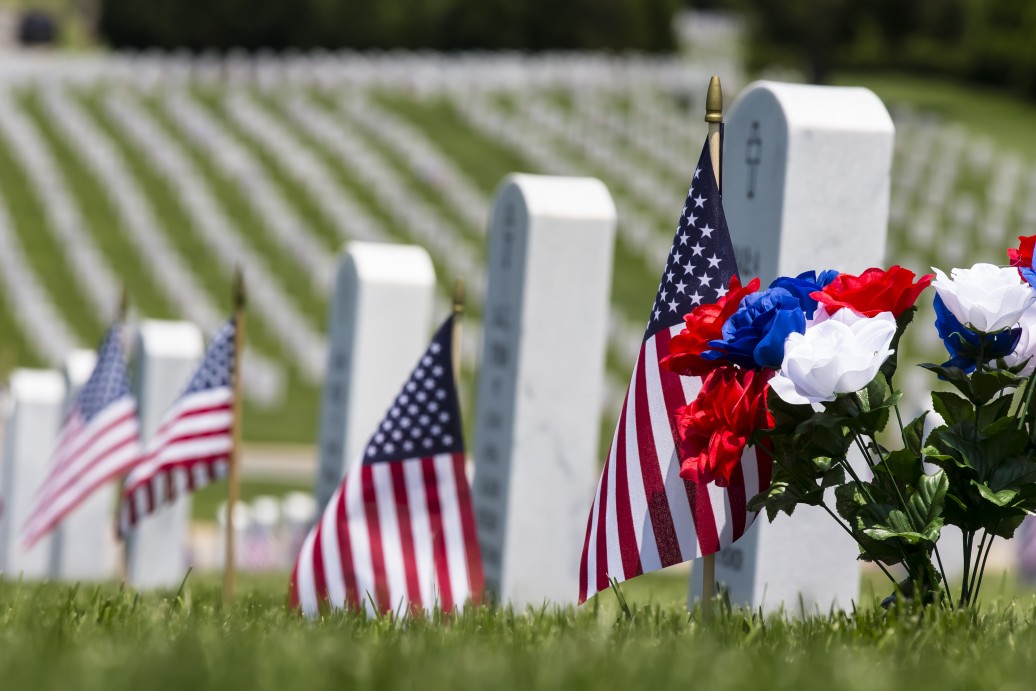Memorial Day: The Meaning Behind the Beginning of Summer

Memorial Day is celebrated across the United States on the last Monday in May every year with barbecues, parades, social and community gatherings, retail sales, and many other events that bear its name. Often thought of as the unofficial beginning of summer, the three day weekend of Memorial Day is a highly anticipated time of year, celebrated by many for the weather, the time off from work, and for the patriotic feeling it instills in so many of us. But what is celebrated on Memorial Day?
Remembering the Fallen
Read More »How Did Memorial Day Begin?
Memorial Day didn’t become a nation holiday until 1968. It is sometimes thought that Americans were emulating ancient Greece and Rome, both of which decorated the graves of their departed, including those lost in war. But its origins in America date back to the post-Civil War era. There are a few different versions of where and how it started.
The Civil War is so far back in time for us that we easily miss what an impact the it had on the United States. Counting both sides, 620,000 soldiers were lost. That number of lost able-bodied young men meant enormous ramifications for society across the nation at that time. (That number is still huge! Can you imagine the US losing that many soldiers in a modern war?)
To honor the fallen in Charleston, former slaves landscaped the unmarked graves of 257 Union soldiers who died as prisoners of the Confederacy as part of a May Day celebration in 1865, just a few months after the war ended.
In 1866 the residents of Waterloo, New York began its annual remembrances by closing businesses and gathering to decorate the graves of soldiers with flags and flowers. Later, the federal government declared Waterloo the birthplace of Memorial Day.
General John Logan petitioned for Decoration Day on May 5, 1868. The first national celebration was held on May 30, 1868, at Arlington National Cemetery, where President Ulysses S. Grant presided over a ceremony honoring the fallen Union and Confederate soldiers. Orphaned children of the deceased soldiers decorated the graves of the fallen with flowers, sang hymns, and recited prayers and poetry to honor and mourn those who gave their lives. This became more widespread, though still scattered, across America through the following decades. Decoration Day became a state holiday in every state by 1890 in the north, but was still celebrated sporadically across the south.
After World War I ended, Decoration Day became recognized across the country as an annual memorial celebration for those who died in service during both the Civil War and World War I. It celebrated fallen soldiers of World War II and the Korean War every year on May 30 until congress passed the Uniform Monday Holiday Act in 1968, and it officially became a three day weekend for federal employees when the law took effect in 1971.
Honoring the Fallen and Memorial Day Today
Though many of us see Memorial Day weekend as an great opportunity for food, family, and fun, Memorial Day is now known as a celebration of the lives lost in all wars. We honor the memory of fallen service members with formal and informal gatherings and ceremonies. The types of celebrations are as varied as the towns and cities across America that hold these celebrations.
Some American cities and towns hold parades. Big cities like Chicago and New York have the largest parades in the country. Most parades include veterans organizations’ participation or that of active military personnel.
Many American families today hold barbecues or large gatherings of family and friends on Memorial Day. Though it may only be an opportunity to enjoy good company and nice weather for many today, gatherings such as these are another tradition going back to the Civil War. Many families would have picnics at the graves of their lost family members as a way to honor and remember them.
Americans also wear red poppies on Memorial Day. Inspired by the poem “In Flanders Field” by John McCrae, artificial poppies soon became sold in fundraising efforts to benefit children affected by wars.
Americans also visit memorials, often holding memorial events at historic sites or statues, plaques, and buildings dedicated to memorializing those soldiers who fell while serving.
Federal guidance tells us we should fly our flags at half-staff on Memorial Day, as we do to honor those who fall in service in our communities throughout the year.
Playing “Taps” is another Memorial Day tradition. This began when an officer used this tune at a funeral instead of the firing of rifles for fear that the sound of shots fired might be mistaken for an attack. Taps was originally written by a U.S. general in 1862 to be a more melodious bugle call signalling bedtime, but has become the official funerary song of our armed forces.
In 1990, President Bill Clinton signed legislation making 3:00 pm each Memorial Day a National Moment of Remembrance. All Americans are asked to stop whatever we are doing and observe a moment of silent remembrance. In the busy world we find ourselves in, even on holidays, this moment of remembrance is one small gesture we can make to honor the bravery, selflessness, and heroic sacrifice of those we have lost to war. Whether enjoying a swim, a barbecued burger, a shopping excursion, or just enjoying the day off, don’t forget to take a moment and remember the ones who gave so we could this enjoy the gift this nation is!





